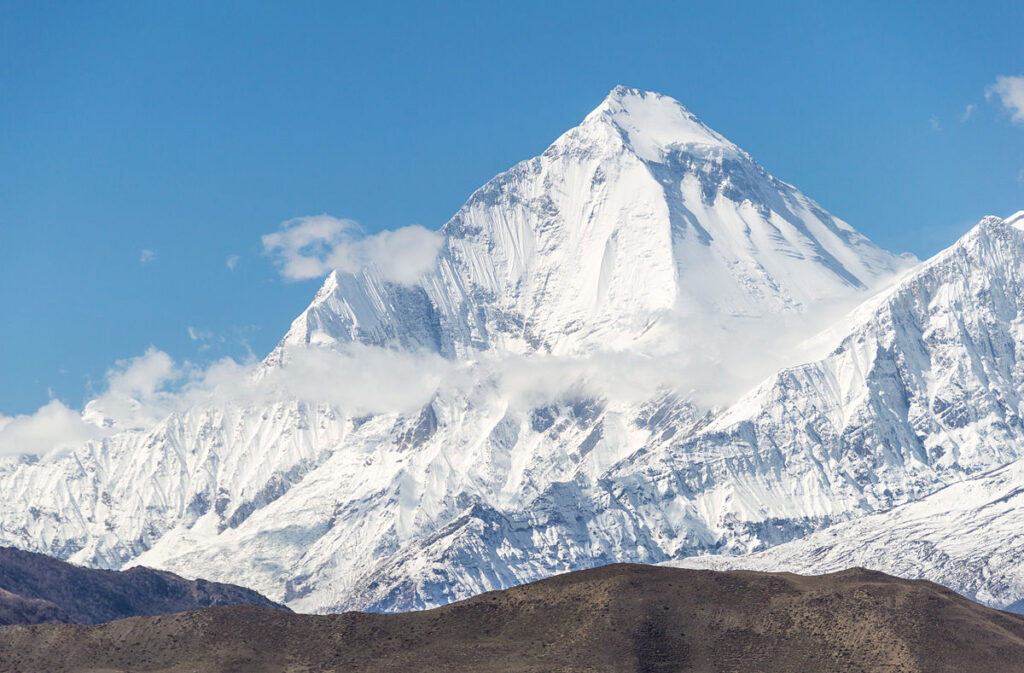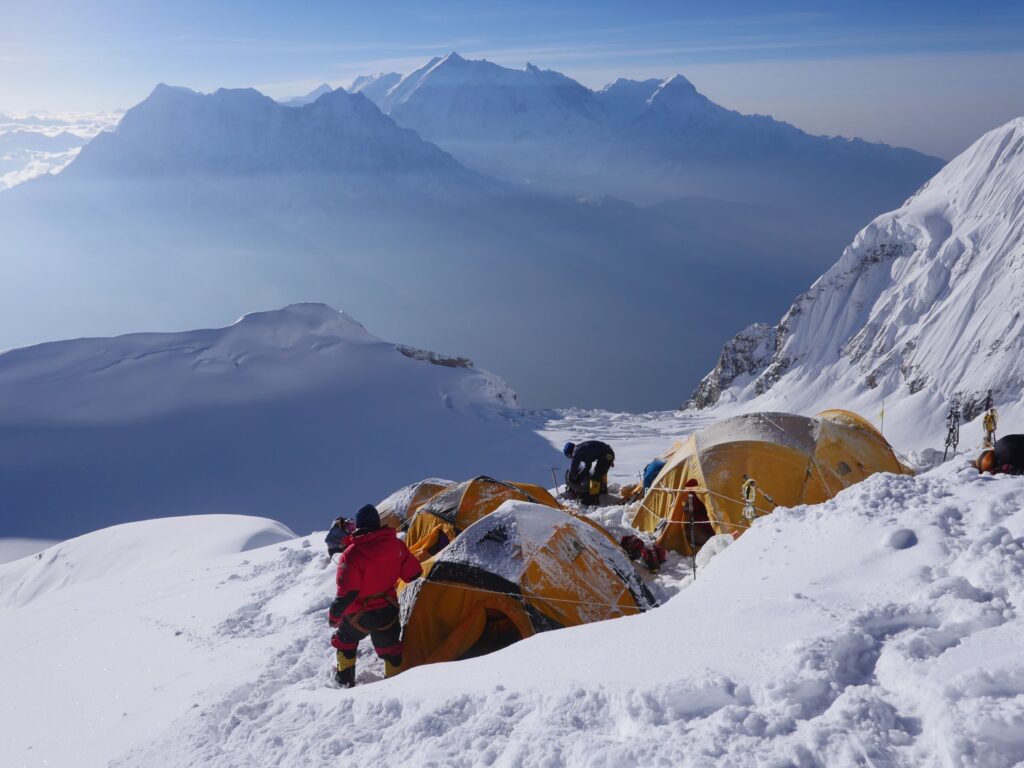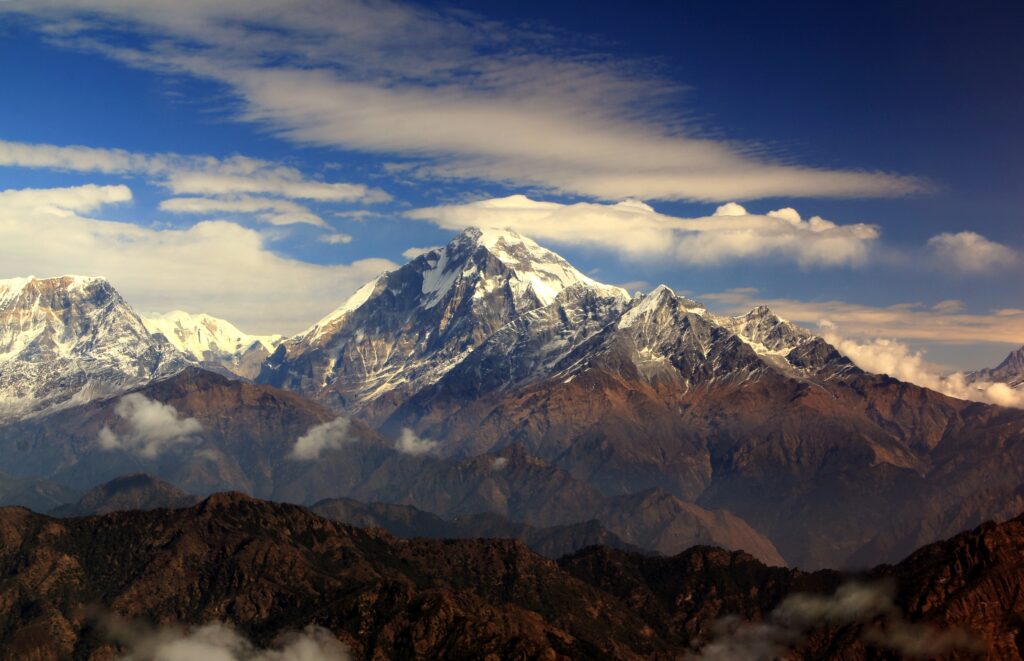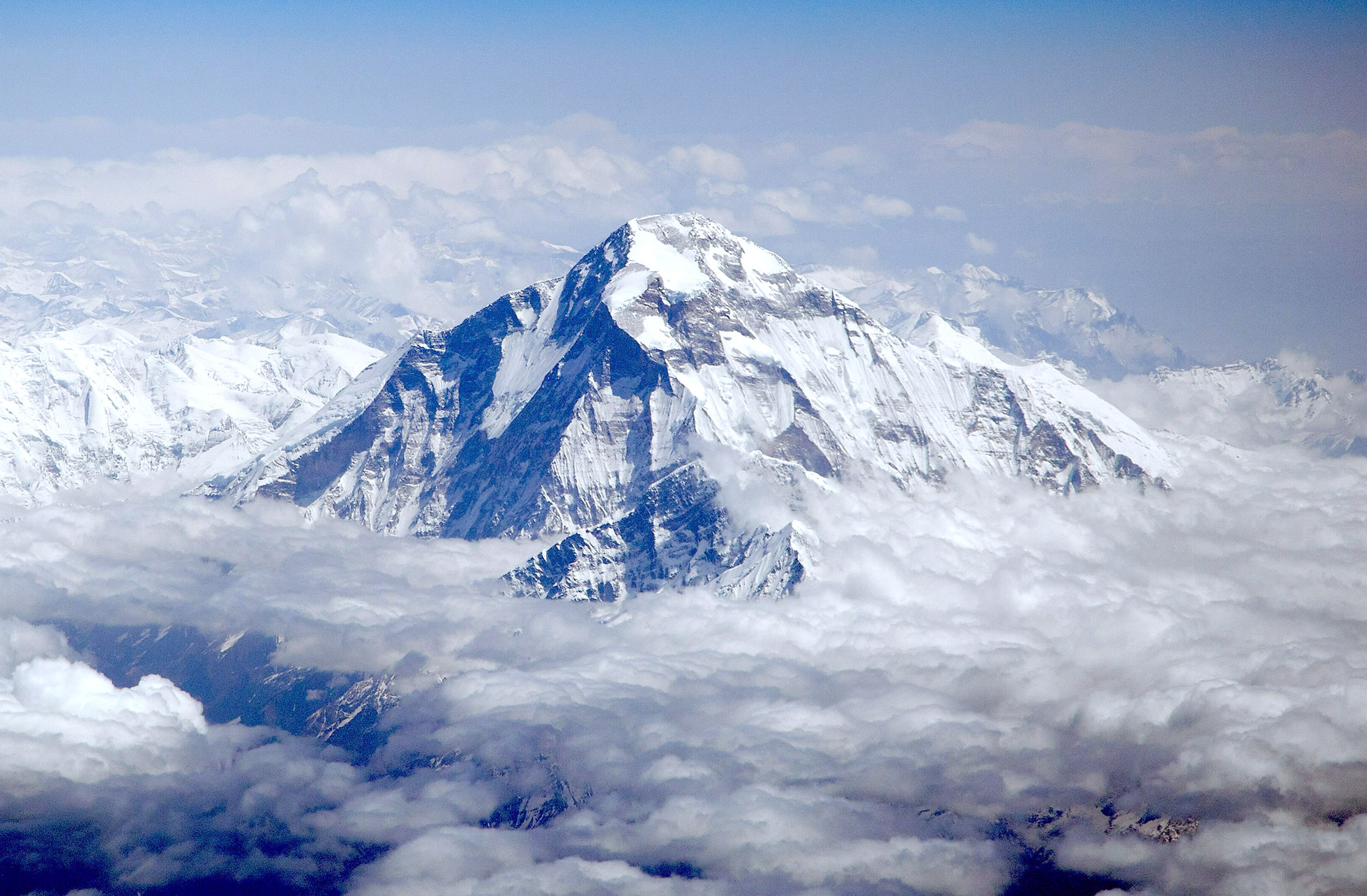Dhaulagiri, the seventh-highest mountain in the world, stands as a majestic sentinel in the Himalayan range of Nepal, reaching a staggering height of 8,167 meters (26,795 feet) above sea level. The name “Dhaulagiri” originates from two Sanskrit words “Dhawala,” meaning white, dazzling, or beautiful, and “Giri,” meaning mountain. Together, they perfectly capture the essence of this awe-inspiring peak “The Great White Mountain.”
Located in the north-central region of Nepal, Dhaulagiri is part of the Dhaulagiri Himal range, which stretches northwest from the Kali Gandaki River. Towering above the surrounding landscape, it forms a dramatic contrast to the deep gorge of the Kali Gandaki, one of the world’s deepest, lying between Dhaulagiri and the Annapurna massif. Its remote location and harsh conditions make it one of the most visually stunning and technically challenging peaks among the 14 eight-thousands of the world.

A Historic Ascent
The first successful ascent of Mt. Dhaulagiri was made on 13th May 1960 by a Swiss/Austrian expedition team. Led by Kurt Diemberger, a renowned Austrian mountaineer, the team etched their names into the annals of Himalayan climbing history. Diemberger is famously known as the only person alive to have made the first ascents of two 8,000-meter peaks Dhaulagiri and Broad Peak. The 1960 expedition utilized a fixed-wing aircraft, the Pilatus PC-6, to transport equipment to high altitude, an innovative and daring approach at the time.
This successful climb marked a turning point in the exploration of the Dhaulagiri region. Despite the mountain being visually dominant and located near popular trekking areas, it had remained unconquered for many years due to its difficult terrain, unpredictable weather, and avalanche-prone slopes. Several attempts before 1960 had failed due to the technical challenges and extreme conditions.

Unique Features and Climbing Routes
What makes Dhaulagiri especially fascinating among the 8,000-meter peaks is its rugged topography and multiple ridges. The mountain boasts five major ridges, along with striking south and west faces that offer various challenging climbing routes. These ridges and faces form complex routes that have intrigued climbers for decades.
The standard climbing route the Northeast Ridge begins at the Dhaulagiri Base Camp, which lies at an altitude of approximately 4,750 meters. Climbers generally establish three to four high camps along the route before attempting the summit. Though it is considered the most feasible route, it is by no means easy. Treacherous crevasses, steep ice walls, and unpredictable avalanches make it a test of endurance, skill, and courage.
The mountain’s isolation further amplifies the challenge. Unlike Everest or Annapurna, where helicopter rescues and logistical support are more accessible, Dhaulagiri remains remote and wild. Expeditions to Dhaulagiri are thus more self-reliant and demand intense preparation and resilience.

Impact on Tourism and Trekking
While Dhaulagiri is primarily known as a destination for high-altitude climbers, the surrounding region also offers remarkable opportunities for trekkers and adventure lovers. The Dhaulagiri Circuit Trek is one of Nepal’s most demanding yet rewarding treks. Circling the entire Dhaulagiri massif, the trek takes adventurers through high alpine pastures, glacier crossings, and hidden valleys, providing breathtaking views of Dhaulagiri I, II, III, IV, and V.
The trek also includes a crossing of the challenging French Pass (5,360 meters) and Dhampus Pass (5,240 meters), making it suitable only for experienced trekkers. Unlike the more commercialized Everest and Annapurna trails, the Dhaulagiri region remains relatively untouched, offering a raw and authentic Himalayan experience.
Moreover, the Dhaulagiri region is home to a unique blend of culture and nature. From Magar and Gurung settlements to traditional Tibetan Buddhist monasteries, the cultural experience is as enriching as the landscape is dramatic. Wildlife enthusiasts may also encounter Himalayan blue sheep, musk deer, and elusive snow leopards in the higher altitudes.

Preserving the Legacy
As adventure tourism grows, conservation of the pristine Dhaulagiri environment becomes increasingly vital. Efforts are being made to ensure responsible climbing practices and promote eco-friendly trekking to preserve the mountain’s ecological integrity. Local communities, tourism boards, and environmental organizations are working together to raise awareness and establish sustainable tourism models.
Mount Dhaulagiri is not just a mountain it is a symbol of natural grandeur, human perseverance, and spiritual tranquility. For those who dare to explore its slopes or even witness it from afar, Dhaulagiri remains an unforgettable part of the Himalayan experience.
Dhaulagiri, “The Great White Mountain,” continues to captivate climbers, trekkers, and nature enthusiasts with its towering presence and compelling history. From its first ascent by Kurt Diemberger and team in 1960 to its modern-day role as a symbol of adventure, Dhaulagiri stands as a proud testament to Nepal’s extraordinary mountain heritage.






